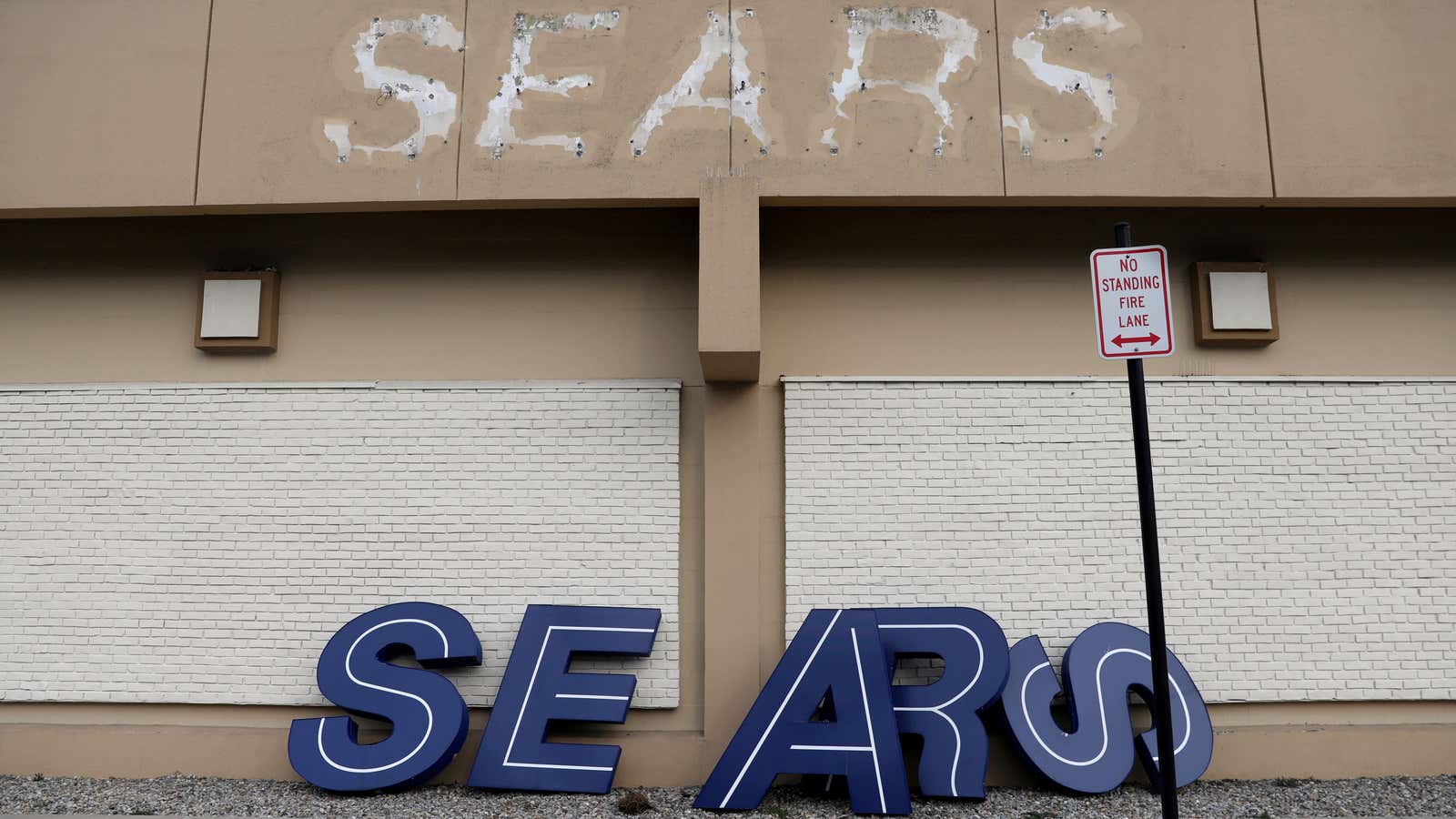The last days of Sears look to be drawing nearer.
Multiple sources report that Sears Holdings, which also includes Kmart, rejected chairman Eddie Lampert’s $4.4 billion bid to buy the company out of bankruptcy. A bankruptcy judge has given Lampert time to submit a revised offer, but the company itself has sent a strong signal that it’s ready to liquidate. If that proceeds, Sears would soon begin the process of closing the hundreds of stores it still has, and selling off everything it owns, from tools and appliances to store fixtures.
Of course, it might not be the end of Sears just yet. Lampert’s bid could succeed, or someone else could at the eleventh hour try to buy the assets, such as the brand name. But let’s face it. At this point, it’s best to let Sears go.
There are going to be big losses involved. For starters, the company still employs some 50,000 people, and the jobs that would be lost can’t all be easily replaced. The reality, though, is they’re likely not sustainable in the long-term anyway. It’s probably more a case of when they will vanish, not if.
The brand itself has a rich history stretching back more than a century. The catalogs that launched the company brought shopping into American homes, which had the upside of, among other things, subverting Jim Crow-era racism as black Americans who might have faced discrimination in stores were able to anonymously order the things they needed. Sears grew into America’s first “everything store,” long before the internet and Amazon, and rose to become the country’s largest retailer. Who knows how many people bought their first appliances at Sears, or how many smaller businesses benefitted from being next to a Sears anchor in the local mall.
But that legacy belongs to the past. Sears hasn’t adapted, and there’s no room for it any longer in retail’s future.
The evidence is easy to see in Sears’ stores. They’re what let Sears initially expand from a mail-order catalog to a retail force that spread across the US, serving suburbs as quickly as they sprang up in regions such as the South and West and becoming valuable anchors for local malls. But by the 1980s, Sears wasn’t able to operate its department stores as efficiently or cheaply (pdf) as the competition, namely Walmart. Sears began to stagnate.
By the end of the 1980s, the company was slashing costs and closing hundreds of locations. When Lampert merged Kmart and Sears to create Sears Holdings in 2005, much of Sears’s floor space was in bad shape. Real change never seemed to arrive. “The stores looked dreadful during a period of massive investment by rival chains Walmart, Target and Macy’s,” wrote Brian Sozzi at Yahoo Finance, reflecting recently on how Sears had already fallen behind more than a decade ago.
The department store, by then, was a struggling format. In 1985, department stores made up 14.5% of all retail purchases in North America, Neil Saunders, managing director of GlobalData Retail, told CNBC. Last year that figure was just 4.3%.
The malls where many Sears branches are located haven’t fared much better. For years now, foot traffic at US malls has been plummeting. Credit Suisse predicted in 2017 that up to a quarter of the country’s more than 1,200 malls could close by 2022.
Extra-large department stores, set in local malls but which look the same everywhere, describes pretty much the opposite of where retail is headed—which is to say toward smaller-format, tech-enabled stores, tailored to the specific location and ideally offering some kind of experience rather than just a place to transact sales. And while Sears failed to fix the trajectory of its stores, it also stumbled on e-commerce, missing the opportunity to become the internet’s everything store before Amazon took the title.
It has now been eight years since Sears turned a profit. Whether the brand continues to exist or not, retail has already moved on without it.
